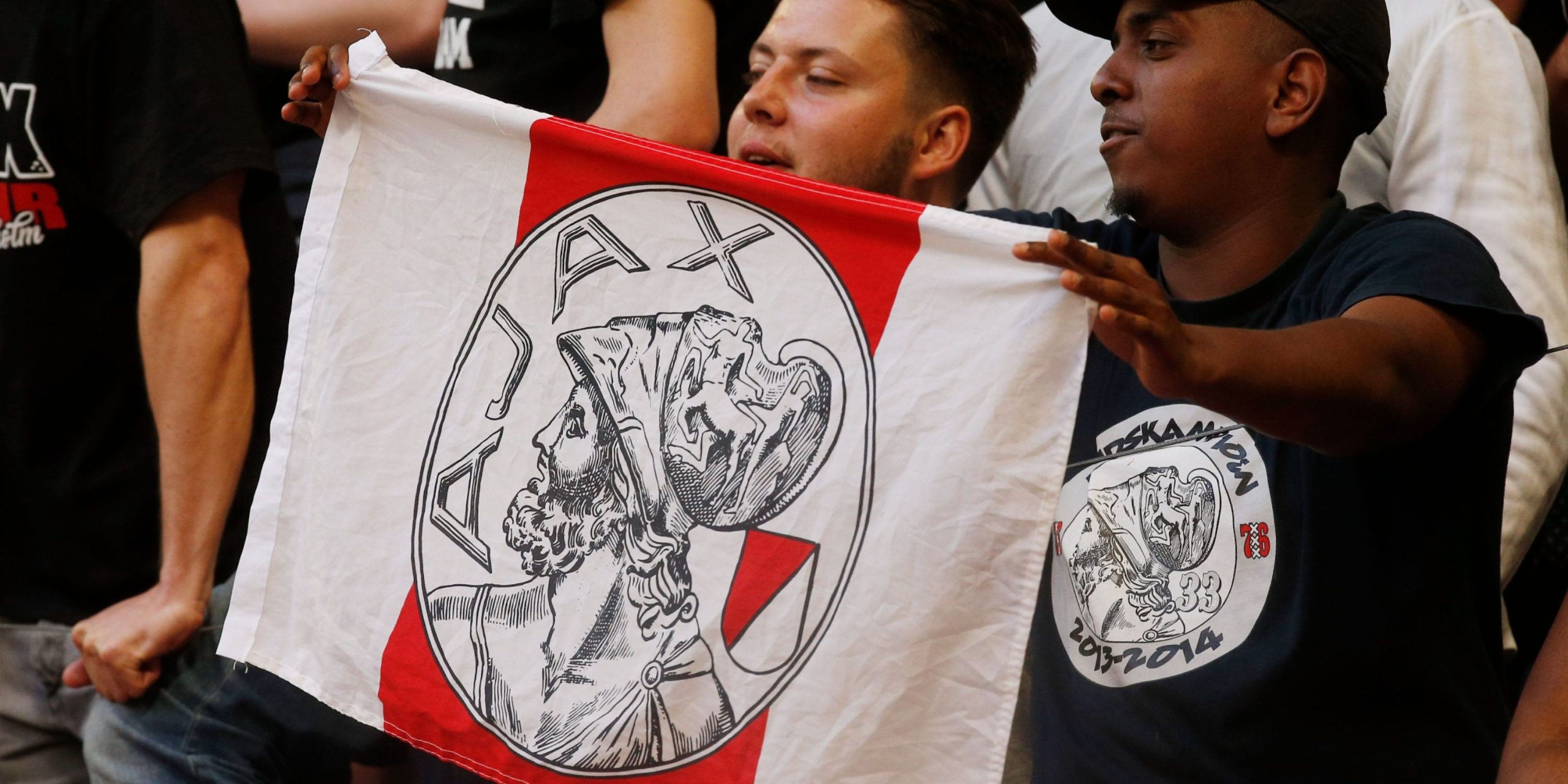A club's badge is a sacred thing, but not all are created equal. From Bayern Munich's symplitic beauty, to Benfica's majesty, we at Football Fancast believe that these may just be the best football club badges in the world.
Join us, as we embark on a visual odyssey through football club badges reveals intricate stories of history and identity.
Ranking the 12 best shirts worn at the European Championships
15 Arsenal 1936/49
The Arsenal emblem from the 1930s is the sole Arsenal badge lacking a cannon, yet it remains an iconic design for the club. Rooted in the art deco style, much like their old Highbury stadium, it features an "A" for Arsenal, a "C" for Club, and a football at its center.
The emblem, a product of visionary manager Herbert Chapman, was integral to his plan to modernize and rebrand the team. Aligned with the aesthetics of the enduring art deco East Stand, this emblem marked Arsenal's transition from the Victorian era to the contemporary and stylish football club it evolved into.
14 Bayern Munich
Much like the club itself, this badge's beauty comes from its simplicity. Bayern Munich finally settled on this badge in 1954, following a series of less impressive iterations. The blue and white diamonds in the middle represent the Bavarian flag, and its elegance is undeniable with the club's name encircled in red.
This badge strikes fear into other clubs domestically and continental. Bayern's success on and off the pitch has made it unmistakable. A beautiful badge for the biggest club in Germany.
13 Copenhagen
Denmark knows design, and there is no place in the country like Copenhagen/Kopenhaven. FC Copenhagen may be a young club, but their badge has become synonymous with Danish football. Since their inception in 1992, they've become THE club in Denmark.
The emblem draws inspiration from Thorvald Bindesbøll, the designer of the Dragespringvandet, also known as the Dragon Fountain, in the Danish capital. Despite Bindesbøll's passing in 1908, his enduring designs stand the test of time.
Notably, he is the mastermind behind the original Carlsberg beer label, a design that remains unchanged to this day. The connection with the badge is further established as Carlsberg, the beer sponsor, is also associated with Copenhagen.
12 Fluminense
Current Copa Libertadores winners, Fluminense, had a badge fit for a champion. Easily one of the biggest clubs in Brazil with one of the most unique shirts, don't be surprised to see some of the game's greats with this crest proudly on their chest.
The red and green hues unmistakably represent the club's colors, and the ornate gothic text adds a touch of flair. Interestingly, the club has even employed the initials as a standalone badge in the past. It truly captures the essence one would expect from a team playing in a stadium like the Maracana in beautiful Rio de Janeiro.
11 Hamburg
A brutalist badge for a club going through a pretty brutal time in its history. Hamburg are one of Germany's traditional powerhouses but have since sunk into the depths of Bundesliga 2. They should have been promoted last year, but the football gods didn't see it fit.
The colors are derived from the crest of SC Germania Hamburg, one of the clubs that merged to become modern-day Hamburg SV. The incorporation of blue pays homage to the sea, symbolizing Hamburg as one of Europe's major port cities. It even looks like a nautical flag that ships across the world use to communicate with one another.
10 Olympique Marseille
They may not be the richest club in France, but Olympique Marseille have two things PSG will never have; the country's first Champions League trophy, and a really cool badge.
The inaugural badge of the club, conceived by founder René Dufaure de Montmirail, was inspired by his personal seal showcasing interwoven letters "D" and "M". During the era when the club was known as "Football Club de Marseille" and primarily involved in rugby, the motto "Droit au but" was adopted.
The current emblem boasts an intricate letter "M" placed over an "O," with the club motto elegantly adorning the glyph.
9 Palmeiras
Another one of Brazil's greatest clubs, Palmeiras was founded in 1914 by Italian immigrants and has since 11 Brazilian League titles and three Copa Libertadores, all while sporting one of the best badges in football.
In previous iterations of the Palmeiras badge, the acronym "PI" represented "Palestro Italia," harking back to its roots founded by Italian immigrants in 1914. However, during World War Two, Palmeiras distanced itself from its Italian association due to Italy's fascist government.
Subsequently, in 1959, the club embraced its current crest design, which has become one of our favorites. Marked by a vivid green and white palette, the badge features lettering that expands at the center and stars that burst toward the viewer.
8 Olympiacos
Greek football may have fallen off a little since the early 2000s, largely due to the country's economic collapse, but Olympiacos are still one of the most recognisable clubs in Europe, thanks in large part to their famous badge.
A proposal by Notis Kamperos, a senior officer in the Hellenic Navy, put forth the name Olympiacos along with the depiction of a laurel-crowned Olympic victor as the emblem for the emerging club. This initiative was further developed by Michalis Manouskos, a notable Piraeus industrialist, who extended the name to its full and current form, Olympiacos Syndesmos Filathlon Pireos.
7 Kaizer Chiefs
Perhaps unfairly, the only African club on this list, Kaizer Chiefs are one of South Africa's biggest clubs, with a badge that sets them apart from the rest.
Established by a former player of the short-lived American team, the Atlanta Hawks, which operated in the sixties and seventies, this team bears the unique amalgamation of its founder's name, Kaizer Motaung, and the moniker of his former team.
Notably, the team even adopted the logo of the American team, complete with a stereotypical feather headdress. The original American team had a brief existence, lasting only a few years, primarily attributed to the overall instability of soccer teams during that period.
6 Chicago Fire
It was hard to pick which Chicago Fire badge to pick, the one they used between 2019-2021, or their current one. We decided to go with the current one.
Renowned sports branding designer Matthew Wolff played a key role in collaboration with Studio/lab and rEvolution firms in the project. The initiative began with a survey conducted by experts to discern the symbols most favored by football fans.
The findings indicated a preference for the letter "C," the Florian Cross, and elements from the Chicago city flag, notably the six-pointed star. Wolff skillfully brought these elements into a cohesive design. It's important to note that this redesign doesn't signify a return to the original logo; instead, it represents a comprehensive re-imagining that encapsulates significant moments from the soccer team's history.







